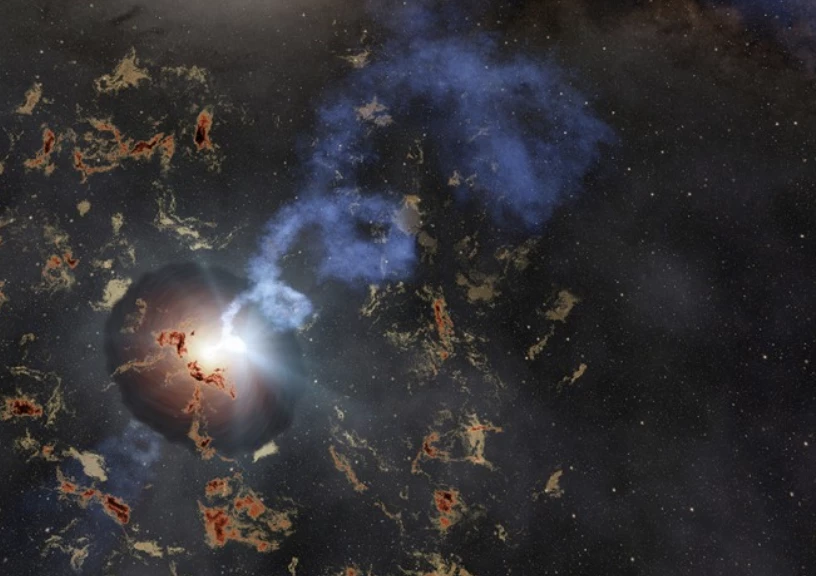Space is a place of astronomical violence and volatility, so it’s fitting that the latest puzzle that has stumped the stargazing science world has been dubbed the Tasmanian Devil, a likeminded erratic ball of pent-up energy in marsupial form.
Astronomers have been left shaking their heads at the strikingly unusual behavior of the Tasmanian Devil, or AT2022tsd, a luminous fast blue optical transient (LFBOT) located around a billion light-years from Earth. It not only defied the usual ‘live fast die young’ nature of LFBOTs by repeatedly exploding over months, but was throwing out energy flares hundreds of billions times that of stars like the Sun.
“Amazingly, instead of fading steadily as one would expect, the source briefly brightened again, and again, and again,” said lead author Anna Ho, an assistant professor at Cornell University. “LFBOTs are already a kind of weird, exotic event, so this was even weirder.”
First identified in 2018, LFBOTs are rare events marked by an intense, bright explosion that’s more powerful than a supernova, before rapidly fading away. The Tasmanian Devil, however, exhibited at least 14 erratic bright bursts, lasting for minutes at a time, across 120 days from its initial recorded explosion – and many subsequent flares were brighter than their predecessors.
The September 2022 event was spotted on software designed by Ho and subsequently identified by 15 telescopes around the globe. Not surprisingly, this never-before-seen event quickly piqued the interests of more than 70 astronomers around the world attempting to connect the dots on this baffling phenomenon.
As of now, the leading theory is that the Tasmanian Devil was caused by failed supernovae (stars that collapsed into a black hole or neutron star before they could explode). For this to have occurred, it would have involved a star about 20 times the mass of the Sun burning through all its fuel and collapsing. Other possibilities include intermediate-mass black holes swallowing up stars, and the dramatic result of other objects interacting with hot, bright Wolf-Rayet stars.
“We think these flashes are probably coming from either a neutron star or a black hole that was formed in the original LFBOT event,” Ho said.

Ultimately, though, the scientists can’t say for sure.
“An event like this has never been witnessed before,” said co-author Jeff Cooke, professor at Swinburne University of Technology, who led the observations with the WM Keck Observatory in Hawaii. “It pushes the limits of physics because of its extreme energy production, but also because of the short duration bursts. Light travels at a finite speed. As such, how fast a source can burst and fade away limits the size of a source, meaning that all this energy is being generated from a relatively small source.”
While the mighty chaos of the Tasmanian Devil event remains a puzzle for now, astronomers believe it could hold some hints to understanding how stars die, and what exactly is left behind.
"Because the corpse is not just sitting there; it’s active and doing things that we can detect," Ho said. "We think these flares could be coming from one of these newly formed corpses, which gives us a way to study their properties when they’ve just been formed."
In essence, this dramatic three-month event may unravel the mysteries of life and death in space.
“These are important to help understand the nature of this source, how these massive stars transition during their death process, and to help find more events to understand how common they are in the universe,” Cooke said.
The team of astronomers now plans to look into the processes that drove the powerful blasts of light. Other LFBOTs previously identified include the Koala, the Camel and the Finch. But none have been quite like the Tasmanian Devil.
"We might be seeing a completely different channel for cosmic cataclysms," Ho added.
The research was published in the journal Nature.
Sources: Swinburne University of Technology, Cornell University






